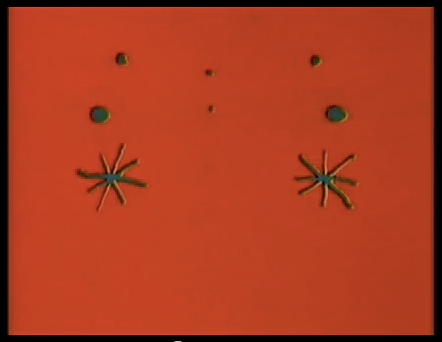I am currently working on some extensions to my motiongram-sonifyer, and came across this beautiful little film by Norman McLaren from 1940:
The sounds heard in the film are entirely synthetic, created by drawing in the sound-track part of the film. McLaren explained this a 1951 BBC interview:
I draw a lot of little lines on the sound-track area of the 35-mm. film. Maybe 50 or 60 lines for every musical note. The number of strokesto the inch controls the pitch of the note: the more, the higher the pitch; the fewer, the lower is the pitch. The size of the stroke con- trols the loudness: a big stroke will go “boom,” a smaller stroke will give a quieter sound, and the faintest stroke will be just a little “m-m-m.” A black ink is another way of making a loud sound, a mid-gray ink will make a medium sound, and a very pale ink will make a very quiet sound. The tone quality, which is the most difficult ele- ment to control, is made by the shape of the strokes. Well-rounded forms give smooth sounds; sharper or angular forms give harder, harsher sounds. Sometimes I use a brush instead of a pen to get very soft sounds. By drawing or exposing two or more patterns on the same bit of film I can create harmony and textural effects. (From Jordan, W. E. (1953). Norman McLaren: His career and techniques. The Quarterly of Film Radio and Television, 8(1):pp. 1–14).
